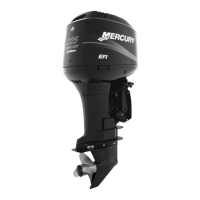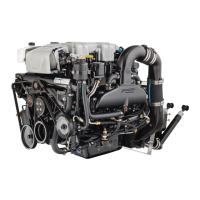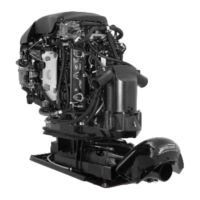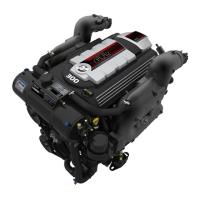POWER TRIM
Page 5B-8 90-883728 JULY 2001
TRIMMING OUTBOARD “DOWN” (IN):
WARNING
Excessive speed at minimum trim “In” may result in undesirable and/or unsafe
steering conditions. Test for handling characteristics after any adjustment is
made to the trim angle (and tilt pin location).
Aids planing, particularly with heavy loads.
Improves ride in choppy water conditions.
Excess trim “In” can cause “bow steer” (boat veers to left or right).
Transfers steering torque to starboard (right).
Improves acceleration to planing speed.
The “Down” circuit actuates the down solenoid (under engine cowl) and closes the motor
circuit. The electric motor drives the pump in the opposite direction as the up circuit, forc-
ing fluid thru passageways into the “down” side of the tilt ram. The tilt ram moves the en-
gine down to the desired position.
Trailering Outboard
The “Up” circuit first moves the trim cylinders; when the trim cylinders extend fully, the tilt
ram extends to tilt the outboard to the full up position for trailering.
Before the boat is trailered, the operator should check for clearance between the outboard
skeg and pavement to prevent damage to skeg from striking pavement.
If the outboard must be tilted for clearance between skeg and pavement, a device such
as a “Transom Saver” should be installed to prevent stress to boat transom from outboard
weight while the boat/outboard are being trailered.
Tilting Outboard Manually
WARNING
Before opening the manual release valve knob, insure all persons are clear of out-
board as outboard will drop to full “Down” when valve is opened.
The outboard can be raised or lowered manually by opening the manual release valve
3 to 4 turns counterclockwise. Close manual release valve to hold outboard at the desired
tilt position.
51353
a
a
a-Manual Release Valve
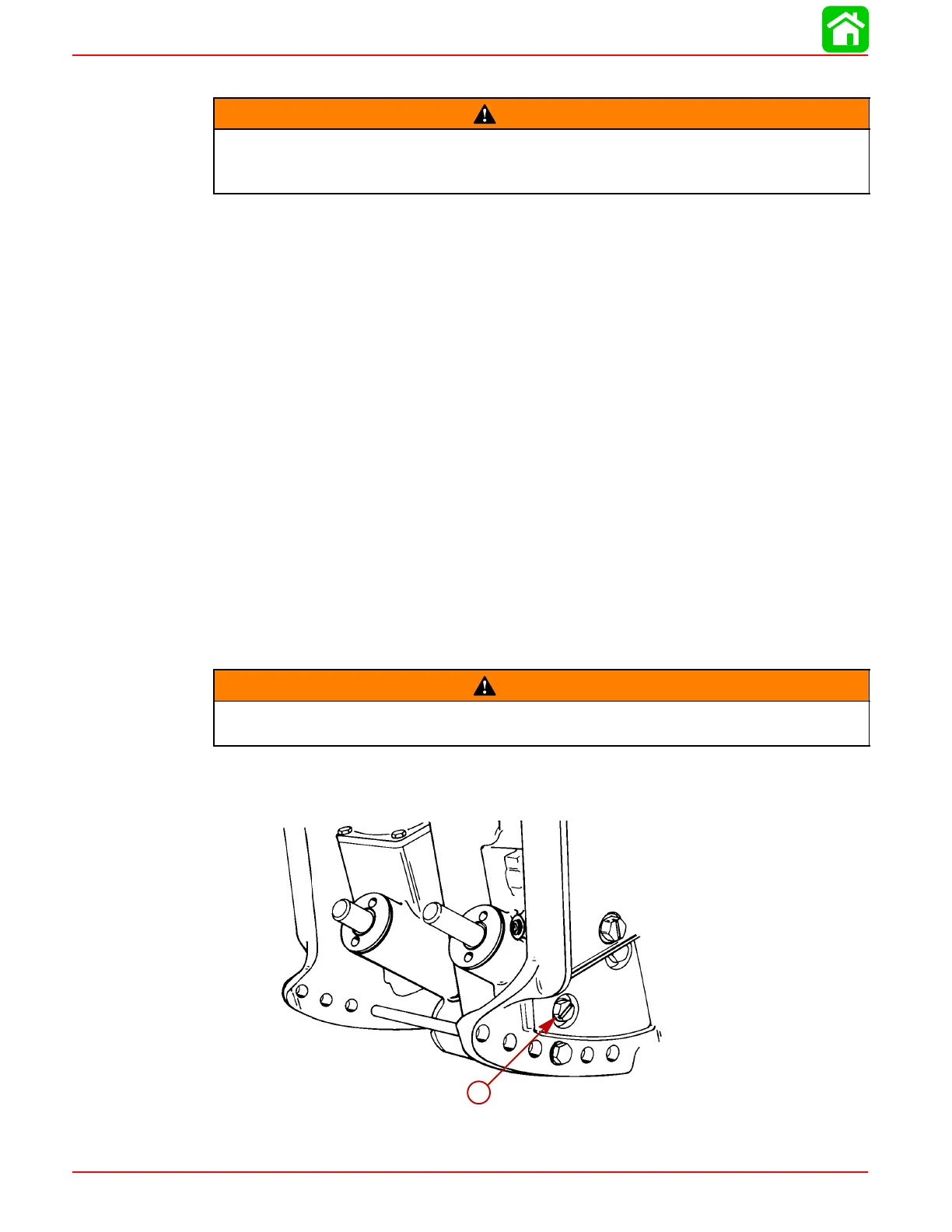